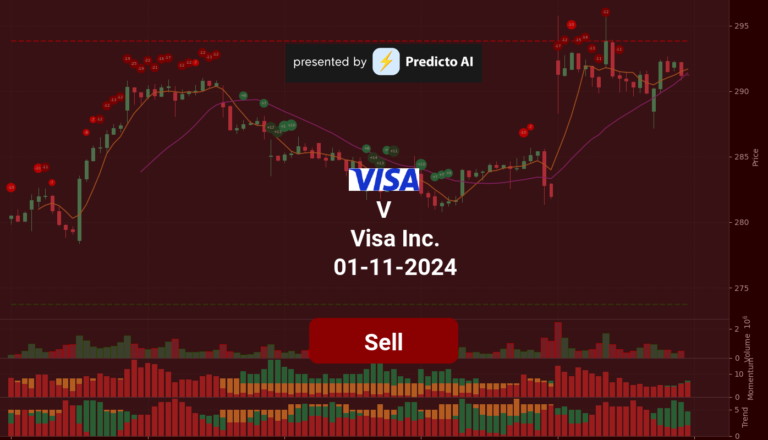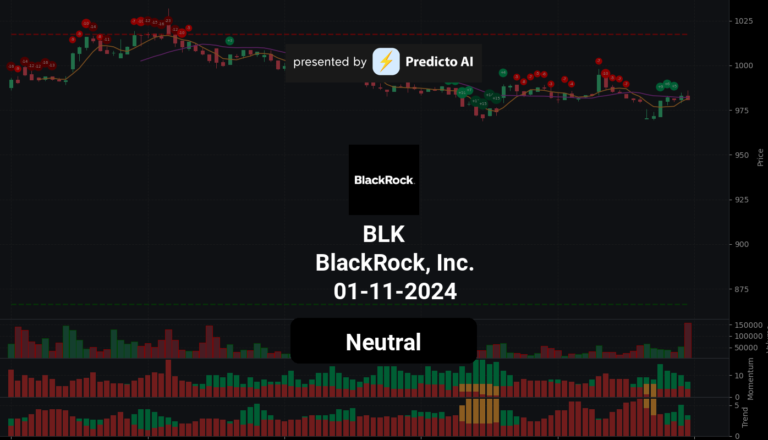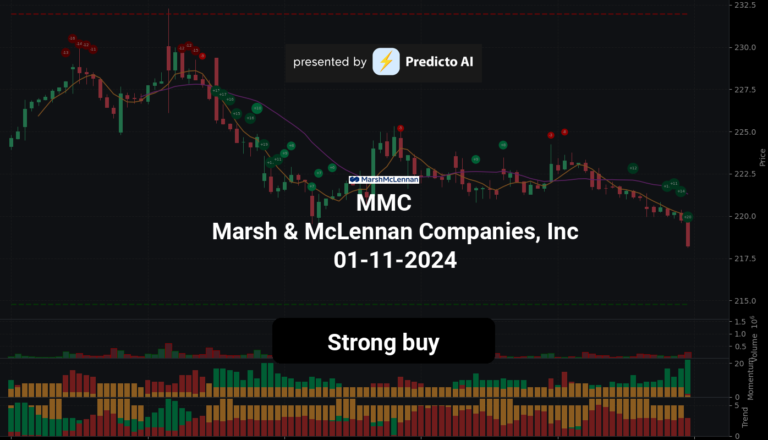JNJ Stock Analysis: A Mixed Outlook for Investors
🔴 Recommendation: Johnson & Johnson (JNJ) is currently rated a strong buy, but investors should approach with caution due to a complex mix of positive and negative indicators.
📈 Key Highlights:
Momentum Indicators: JNJ is showing signs of being oversold, with favorable metrics such as the Money Flow Index and Stochastic RSI suggesting a potential rebound.
Financial Health: The company boasts a high operating margin of 100.00%, indicating efficient operations, but faces challenges with a declining net income trend.
Institutional Ownership: Strong institutional backing at 72.68% reflects confidence in JNJ’s long-term prospects.
⚠️ Caution Flags:
Bearish Trends: The stock is currently below the 50-day and 200-day EMAs, signaling a strengthening bearish trend.
High Debt Levels: Average total debt of $34.03 billion raises concerns about financial health and flexibility.
Legal Challenges: Ongoing legal issues related to talc products could impact JNJ’s reputation and financial performance.
Let’s dive into the details as we break down the price trends, indicators, financial health, valuation metrics, and more 👇
JNJ Price Analysis

| Positive Momentum Signals | Negative Momentum Signals | Hold Momentum Signals |
|---|---|---|
|
|
|
| Positive Trend Signals | Negative Trend Signals | Hold Trend Signals |
|---|---|---|
|
|
|
Johnson & Johnson (JNJ) presents a complex investment landscape characterized by both positive and negative indicators. Currently, the stock is rated a strong buy, suggesting potential upside for investors willing to navigate the volatility.
On the positive side, momentum indicators show that JNJ is oversold across several metrics, including the Money Flow Index (MFI), Stochastic RSI, and WaveTrend, indicating a potential bottom. The Relative Strength Index (RSI) is also moderately bullish, which could signal a rebound in the stock’s price. Additionally, trend indicators are favorable, with the On-Balance Volume (OBV) showing an increasing trend and a positive MACD histogram crossover, suggesting that buying pressure is building.
However, caution is warranted due to several negative indicators. The stock is currently below the 50-day and 200-day Exponential Moving Averages (EMAs), indicating a bearish trend that is strengthening. The presence of a Death Cross, where the 50-day EMA has crossed below the 200-day EMA, is a strong bearish signal. Furthermore, the price is below the Supertrend indicator, reinforcing the bearish outlook.
In summary, while JNJ shows signs of being oversold and has some positive momentum indicators, the prevailing bearish trends and significant technical signals suggest that investors should proceed with caution. A strong buy rating reflects the potential for recovery, but the current downtrend and negative signals indicate that investors should be vigilant and prepared for possible volatility in the near term.
JNJ Fundamental Analysis
JNJ’s recent financial performance presents a mixed picture, prompting a cautious outlook for potential investors. On one hand, the company showcases strong operational efficiency with an impressive operating margin of 100.00%, indicating effective cost control. Additionally, a net profit margin of 11.99% reflects its ability to generate profits after expenses, while a current ratio of 1.46 suggests a healthy liquidity position, allowing it to comfortably cover short-term liabilities.
However, several concerning trends emerge from the analysis. The net income for the most recent period was $2.69 billion, but the year-over-year trend shows a decrease, raising questions about future profitability. Furthermore, the average net debt of $11.64 billion and a debt-to-equity ratio of -5.80 indicate potential issues with financial leverage and equity financing, which could impact the company’s financial flexibility. The cash to total assets ratio of 0.13 also highlights limited financial flexibility and increased vulnerability to economic shocks.
In terms of valuation, the forward P/E ratio of 15.13 suggests that the stock may be fairly valued, but the high price-to-sales ratio of 4.55 raises concerns about potential overvaluation. The alarming negative earnings growth of -89.10% further compounds worries about future profitability and investor sentiment.
While JNJ reports a revenue growth of 5.20%, indicating moderate growth potential, the year-over-year revenue growth of only 0.11% suggests stagnation, which could be a red flag for investors. Additionally, the average total debt of $34.03 billion and a negative average tangible book value of -$5.87 billion indicate that liabilities exceed assets, raising significant concerns about the company’s financial health.
On a more positive note, the company is investing in growth with an average capital expenditure of $4.01 billion and has a positive net cash from financing of $22.67 billion, which could be utilized for growth or debt reduction. However, the stock repurchases of $4.44 billion may also raise concerns about the impact on cash reserves and overall financial flexibility.
In summary, while JNJ exhibits some positive indicators such as strong operating margins and moderate revenue growth, the negative trends in net income, high debt levels, and potential overvaluation suggest a cautious approach. Investors should carefully consider these factors and the company’s ability to navigate its challenges before making any investment decisions.
Financial Health
🔴 Net Income for the most recent period was $2.69 billion, but the year-over-year net income trend shows a decrease, raising concerns about future profitability.
🟢 Operating Margin is exceptionally high at 100.00%, indicating efficient operations and strong cost control.
🟢 Net Profit Margin of 11.99% reflects the company’s ability to generate profits after all expenses.
🔴 Average Net Debt is $11.64 billion, which warrants further investigation into its impact on financial flexibility.
🔴 Debt-to-Equity Ratio of -5.80 suggests a moderate level of leverage, but the negative value indicates potential issues with equity financing.
🟢 Current Ratio of 1.46 indicates a healthy liquidity position, suggesting the company can cover its short-term liabilities comfortably.
🔴 Cash to Total Assets Ratio of 0.13 indicates limited financial flexibility and higher vulnerability to economic shocks.
Valuation
🔴 Forward P/E ratio of 15.13 suggests the stock may be fairly valued, but the high Price-to-Sales ratio of 4.55 indicates potential overvaluation.
🔴 Negative earnings growth of -89.10% raises concerns about future profitability and investor sentiment.
Growth and Profitability
🟢 Revenue Growth of 5.20% is positive, indicating moderate growth potential.
🔴 Profit Margins are relatively low at 16.74%, suggesting challenges in controlling costs and generating profits.
🔴 Operating Margins of 24.52% are decent but could be improved to enhance profitability.
Shareholder Information
🔴 Average Ordinary Shares Outstanding at 2.41 billion indicates potential dilution concerns.
🟢 Average Treasury Shares of 712.82 million suggest management’s confidence in the company’s future prospects through share buybacks.
Income Statement
🟢 Total Revenue for the most recent period was $22.47 billion, showing a solid revenue base.
🔴 Year-over-year revenue growth of 0.11% suggests stagnation, which could be a concern for investors.
Balance Sheet
🔴 Average Total Debt of $34.03 billion raises concerns about the company’s financial health and ability to service its debt obligations.
🔴 Average Tangible Book Value of -$5.87 billion indicates that liabilities exceed assets, which is a significant red flag.
Cashflow
🟢 Average Capital Expenditures of $4.01 billion suggest the company is investing in growth and expansion.
🟢 Positive Net Cash from Financing of $22.67 billion indicates the company is raising capital, which could be used for growth or debt reduction.
🔴 Stock Repurchases of $4.44 billion could be a positive signal, but they also raise concerns about the impact on cash reserves and financial flexibility.
Overall, while there are some positive indicators such as strong operating margins and revenue growth, the negative trends in net income and high debt levels suggest caution. The company appears to be in a stable position but faces challenges that could impact future performance.
JNJ News Analysis
JNJ News: A favorable outlook for investors.
Johnson & Johnson (JNJ) is currently presenting a favorable outlook for investors, driven by positive developments in its pharmaceutical segment and ongoing investments. The recent news highlights both the strength of its product pipeline and strategic investments, which could enhance its market position. However, legal challenges remain a concern that investors should monitor closely.
🟢 Johnson & Johnson is featured in a list of “3 Dividend Stocks to Double Up on Right Now,” indicating strong investor interest in its dividend potential.
🟢 The company is also included in “3 Dividend Growth Stocks You Can Buy and Hold Forever,” suggesting confidence in its long-term growth and stability.
🟢 JNJ’s blockbuster drug, Tremfya, has shown promising results in treating plaque psoriasis, which could lead to increased sales and market share.
🟢 Tremfya has achieved statistical significance across primary endpoints in a Phase 3b study, reinforcing its efficacy and potential for broader adoption.
🟢 New study findings reveal that Tremfya effectively clears overlooked and undertreated plaque psoriasis, further solidifying its market position.
🔴 However, JNJ faces ongoing legal challenges related to its talc products, which could impact its reputation and financial performance.
🟢 The company is investing $2 billion to build a pharmaceutical factory in North Carolina, signaling a commitment to expanding its production capabilities and enhancing its product offerings.
JNJ Holders Analysis
The financial health of JNJ presents a mixed outlook, leading to a neutral recommendation for the next month. While there are positive aspects, certain indicators raise concerns.
🟢 JNJ has a high institutional ownership at **72.68%**, indicating strong interest from large investors, which typically suggests confidence in the company’s long-term prospects. This level of institutional backing can provide stability to the stock price.
🟡 The insider ownership is very low at **0.09%**, which may indicate a lack of confidence from company management or a high degree of external control. This could be a red flag for potential investors, as it suggests that insiders may not have significant skin in the game.
🟡 The number of institutional holders is substantial at **4742**, reflecting a diversified ownership structure. This can be beneficial in terms of reducing volatility, but it also means that any significant sell-off by these institutions could impact the stock price negatively.
🔴 Recent insider transactions show a higher level of selling compared to buying, with only **106,589 shares purchased** in the last six months against **5,635 shares sold**. This trend may indicate that insiders are not optimistic about the near-term performance of the stock.
🔴 The overall market sentiment has been cautious, with analysts expressing concerns about potential headwinds in the healthcare sector, which could affect JNJ’s performance.
JNJ Analyst Ratings
The analyst ratings for JNJ show a balanced outlook, with a total of 4 strong buy ratings, 8 buy ratings, 8 hold ratings, 2 sell ratings, and 1 strong sell rating. This indicates a generally positive sentiment, although there is a notable number of hold ratings which suggests some analysts are cautious. 🟡 In the past month, the ratings have remained stable, with no significant downgrades, which is a positive sign for the stock’s stability.
The recent upgrades from firms like Citigroup and RBC Capital, maintaining their buy and outperform ratings respectively, further support a bullish outlook. However, the presence of hold ratings indicates that some analysts are waiting for clearer signals before making stronger recommendations.
🟢 Given the overall positive sentiment and the lack of significant negative news impacting JNJ, it is likely that the stock will perform reasonably well in the next month. A forecasted price range could see JNJ trading between $160 and $170, reflecting a moderate upside potential based on current analyst sentiment.
Overall, while the outlook is positive, the medium confidence level suggests that investors should remain vigilant for any changes in market conditions or company performance.
JNJ Economic Analysis
Based on the US economic and market data:
🔴 The unemployment rate has increased to 4.3%, up from 4.1% in the previous month. This rise indicates potential weakness in the labor market, which could lead to reduced consumer spending and negatively impact JNJ’s sales.
🟡 Retail sales have shown a slight increase, but the growth is modest at 3.5% compared to previous months. This suggests that while there is some consumer demand, it may not be strong enough to significantly boost JNJ’s revenues in the short term.
🟢 The GDP growth rate remains stable, indicating a resilient economy. However, the overall economic growth is not accelerating, which may limit JNJ’s ability to expand its market share or increase prices.
🔴 The CPI data indicates inflationary pressures, which could lead to increased costs for JNJ in terms of raw materials and labor. This could squeeze profit margins if the company is unable to pass these costs onto consumers.
Overall, the mixed signals from the economic indicators suggest that JNJ may face challenges in the coming month. The stock price is likely to remain stable but could experience downward pressure due to the rising unemployment rate and inflation concerns.
Disclaimer
Investors may consider the AI predictions and news summaries as one factor in their investment decisions alongside their own research and risk tolerance.




